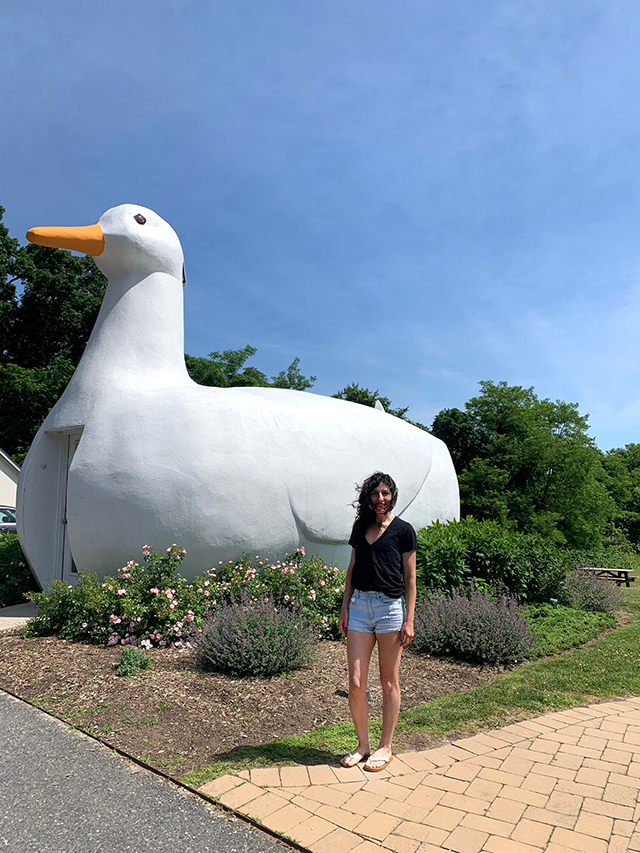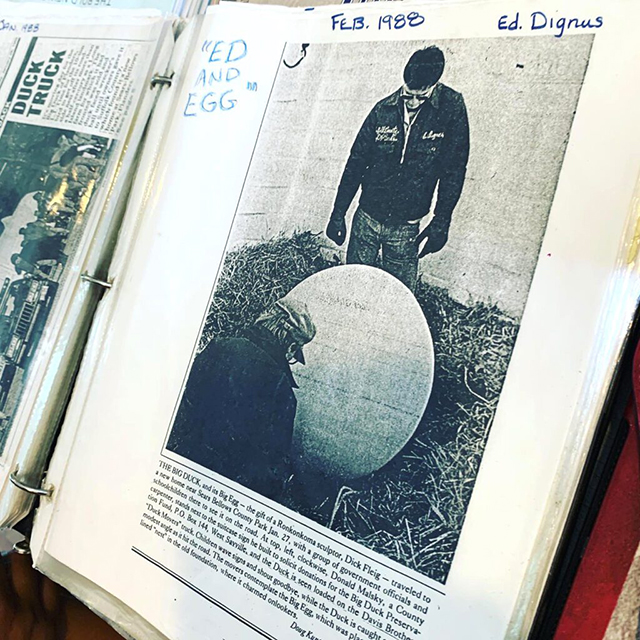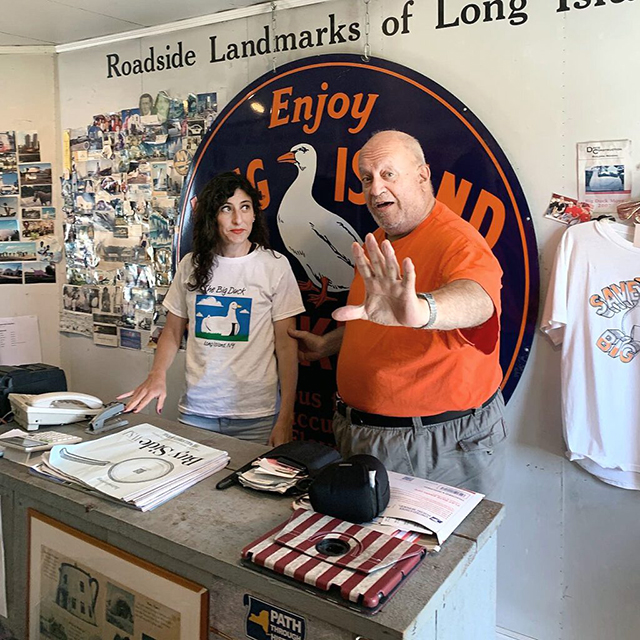The Big Duck
My sister was out of town and I was watching her children. I wanted to make the most of my time and while the kids were in school, I took my friend Fernanda, who is visiting from Colombia, to the most important historical landmark on Long Island – The Big Duck.
The beautiful structure came into view as we were driving on the narrow country road. I was a little worried The Big Duck wouldn’t be open. The architectural marvel is also a quirky museum and gift shop. We hurried to the door. It was open and we excitedly entered!
Fernanda and I were greeted by Suffolk County Park Ranger Mr. T., a charismatic duck enthusiast and an encyclopedia on Big Duck’s fascinating history.
I was overwhelmed by the articles and photos that lined the walls. My eye immediately was drawn to the illustration of The Big Duck on the cover of The New Yorker, dated May 11, 1987. Mr. T. wasted no time and began speaking to us about Big Duck’s rich history.
Fernanda and I learned the structure dates back to 1931. At this time, there were Pekin duck farms everywhere in Suffolk County. It is said the ducks came via ship from China in 1870 and since this animal couldn’t fly, and its meat was delicious, the farming of Pekin developed quickly into a lucrative business. But competition was fierce. And so a savvy Riverhead duck farmer, Martin Maurer, and his wife Jeule had an idea to set their duck ranch apart from the competitors. The concept came about in California when the couple was on vacation. There, they passed by a roadside coffee shop that was shaped like a coffee pot. Here The Big Duck was conceived.
In 1988, a mysterious egg was found in the basement of The Big Duck
Maurer hired local carpenter George Reeves and two set designers, brothers William and Samuel Collins to erect the duck. A live duck served as a model. And the architects studied a carcass of a cooked chicken to create a plan for the frame. The duck is built of wood, wire, and mesh. The eyes are notably made from two Model-T tail lights. To this day, they glow red at night. The Big Duck is 30 feet from its beak to its tail. The beloved fowl stands a proud 20 feet high.
With the success of his business, Maurer purchased land and moved his ranch and the gigantic duck from West Main Street to its current location on Route 24 in Flanders, Long Island in 1936.
Duck farming declined in the 1960s when it became clear that the pollutants from this production were adversely affecting Suffolk county’s ecosystem.
In 1987, the big duck’s fate was threatened as the land it grazed was set for development. The community was outraged and organized to save the duck. They contacted local newspapers, created t-shirts, and even got the attention of Christie Brinkley, who advocated on public access television to save the duck. The efforts were a success and in 1987, instead of demolition, The Big Duck was delicately transferred to a nearby county park. At this time The Big Duck was generously gifted by the owners, the Eshgis to Suffolk County.
Myself and Mr. T
I found this amazing … yet again, in 2007, The Duck migrated. The development plans fell through and The Big Duck was moved back to its former site in Flanders, to the delight of the community. In 2008, Big Duck earned its rightful designation and was placed on the National Register of Historic Places.
The Big Duck is so iconic that a school of architecture was named after it. Duck Architecture is the official term for highly sculptural forms that represent products or services available within. Architect Robert Venturi and Denise Scott Brown introduced the terminology in 1968.
There’s so much more I’d like to share about the eccentric side of The Big Duck, like its mysterious egg, the country song, and my obsessive thoughts on the vintage “Save The Big Duck” t-shirt but that will have to wait for part two.
Visit The Big Duck when you find yourself unexpectedly out of Rockaway this summer – 1012 Flanders Rd., Flanders NY. And follow The Big Duck is on Instagram too!! – @thebigduckli.


























